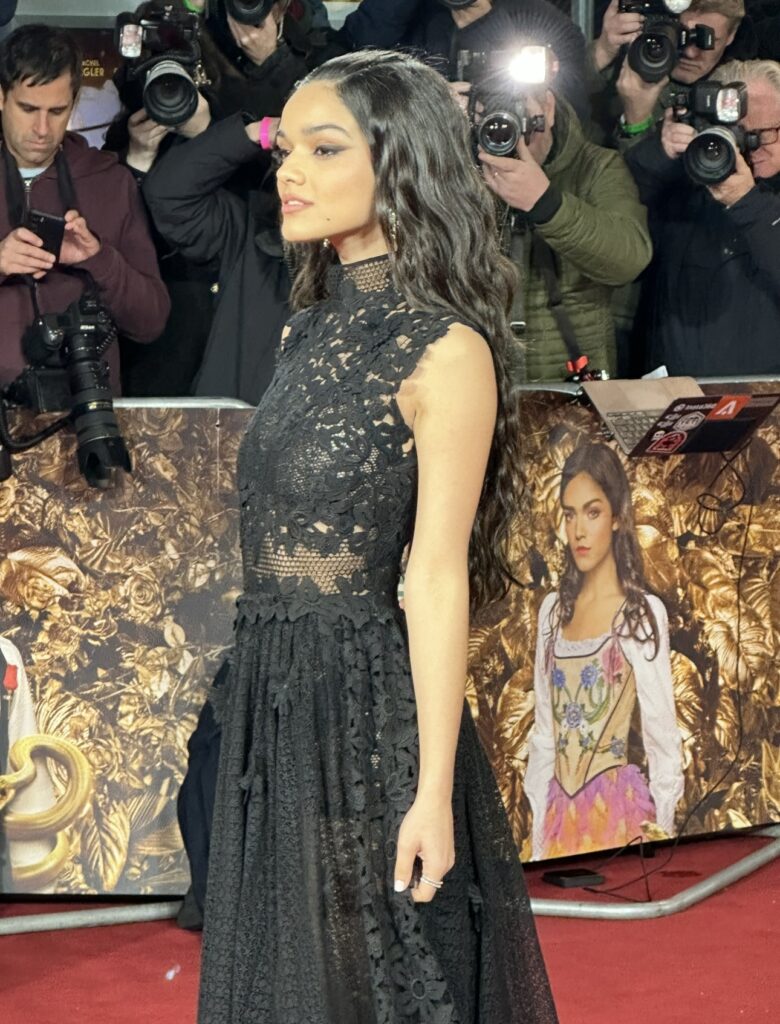
Editor’s Note: This article contains spoilers. Staff writer Spencer Gorka attended the movie showing with Point TV.
Disney’s live-action “Snow White,” released on March 21, has been met with fiery reviews. From its press promotions with stars Rachel Zegler and Gal Gadot, the internet has buzzed with confusion and outrage. YouTube channels, podcasts and social media erupted with criticism, often citing quotes from the cast and Disney itself.
Point Loma Nazarene University’s Point TV organized a trip for students to see the film at the Mission Valley AMC. With 30 attendees, the group had the theater to themselves – perhaps a sign of the film’s poor reception.
“Going into the film, my expectations were extremely low, which I think actually allowed me to enjoy the film more,” Ainsley Justus, a first-year media communication major, said.
Many students pointed to controversies surrounding Zegler’s public comments about the original 1937 film as a factor that soured their expectations.
“Due to the recent controversies about the film trying to get away from the prince saving the day, I already went into the movie thinking it would disappoint,” Kadence Cook, another first-year media communication major, said.
The group mostly sat in silence, with only a few bursts of laughter breaking through the quiet. Like many critics online, PLNU students had much to say about the film’s visuals, storytelling and tone.
“[Digital cinematography] can leave the images feeling shallow and almost sterile due to a lack of shadow and too pristine of colors,” Justus said. “This can prevent viewers from feeling fully immersed in the setting.”
By contrast, 2015’s “Cinderella,” shot on film, had a warmer, grainier texture that better suited a fairytale. Similarly, 2024’s “Wicked” faced comparable issues with overly vibrant digital visuals.
Nathan Gibbs, PLNU professor of media communication, accompanied the students and noted a disconnect between the film’s message and visual choices. In the beginning, the kingdom is shown as colorful and vibrant under the rule of Snow White’s parents. But after the Evil Queen takes over, the land loses its color – that vibrancy never returns, even when good prevails.
“Everybody’s dressed homogeneously in white, and I was just like, ‘What is that?’” Gibbs said.
The theatrical, almost stage-like production style also drew criticism.
“There was a little too much singing,” Cook said. “It had a lack of being able to move the storyline along, which is probably why they leaned on the musical aspect.”
The sets looked like sets, lacking the immersive quality expected from a big-budget fantasy. The acting was exaggerated, and musical numbers felt like exposition rather than storytelling. Gibbs also commented on the oddly specific German setting, which included dialogue, architecture and costumes.
As for performances, Justus said the actresses’ portrayals were convincing enough to keep her engaged.
“I wasn’t watching Rachel Zegler and Gal Gadot, but Snow White and the Evil Queen, which allowed me to be more immersed in the story – even though I was still critical of it,” she said.
The script, however, was riddled with structural issues. After backlash during pre- and post-production, the film made changes that weakened the story. The seven dwarves were re-added to appease fans but lacked their original purpose. Character arcs, like Grumpy’s transformation, were missing and the dynamic among the dwarves felt incomplete.
A new love interest, Jonathan, was introduced as a rebel bandit, but the romance was underdeveloped. The two dislike each other, then suddenly fall in love based on others’ suggestions – without any real buildup or emotional connection.
The revolutionary subplot toward the end also lacked setup. Snow White confronts the guards and reminds them of their past, prompting them to turn on the Queen, who then abruptly kills herself with a magic mirror. This resolution left viewers with questions about her character and motivations.
The biggest cloud over the film remains the controversy surrounding Zegler’s interview comments and political remarks, which many fans felt disrespected the legacy of the original story. Even if one avoided the internet backlash, the film itself struggled to stand on its own.
According to Deadline, “Snow White” is projected to lose around $115 million, making it one of Disney’s biggest remake flops. From costuming to screenplay, the film lacked the charm and integrity of the 1937 classic. What once marked the birth of a legendary animation studio now stands as a cautionary tale – a “foley” a century in the making.
